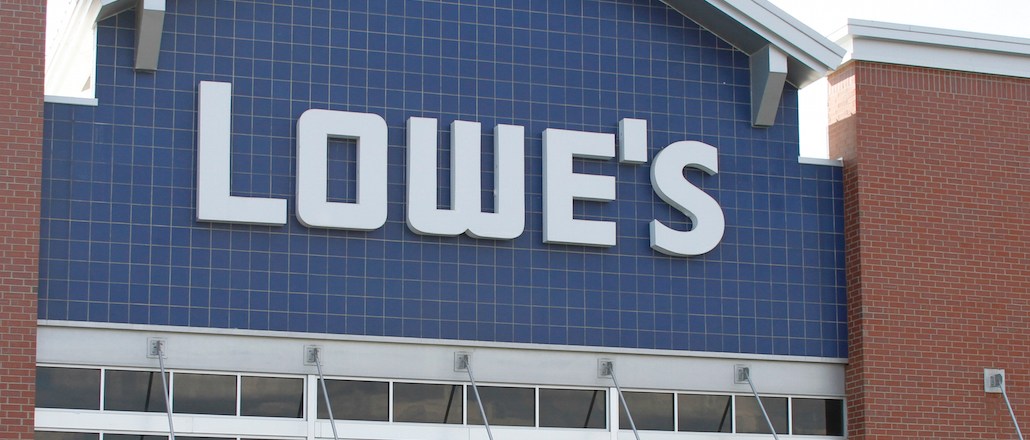Lowe’s sees traction on two tricky social platforms: Pinterest and Vine

On social media, Lowe’s Home Improvement has found success on two platforms where retailers typically struggle to gain traction: Pinterest and Vine. On the former, the brand has 3 million followers; the latter, 31,000.
Brad Walters, Lowe’s director of social media, said that the retailer only joins a new platform if it can figure out how to engage with users while providing something new and relevant to its brand.
“We don’t jump in until we can identify that plan,” he said.
According to Walters, Lowe’s was quick to act on Pinterest when the platform first rolled out, and that’s since paid off. A 2014 study by Statista ranked Lowe’s as the third-most popular account in Pinterest, after L.L. Bean (5 million followers) and Nordstrom (4 million followers). Top competitor Home Depot has 330,000 followers, a 10th of Lowe’s.
Lowe’s most popular boards on the site include groupings called “Get Organized,” “Bathroom Inspiration” and “Lowe’s Creators,” a collection of projects completed by popular bloggers. Lowe’s strategy on the site is to not push product heavily; instead, it creates boards around events and projects and general inspiration not directly related to home improvement, like “Oh, The Places We’d Go,” a board dedicated to photos of scenic destinations.

Most retailers have a hard time seeing much return from Pinterest. Elizabeth Arden ditched it all together earlier this year when it realized its content wasn’t standing out from the competition’s boards.
A Forrester analyst report from January advised retailers to be wary with their resources when it came to Pinterest, calling it a “bundle of contradictions.” With its massive user base, Pinterest is a goldmine of data — the problem, however, is that marketers don’t have access to that data, wrote Forrester’s Nate Elliott. According to the report, only half of the firm’s recognized top brands have a branded Pinterest account.
Lowe’s, however, has a great relationship with Pinterest and is in talks to test the platform’s recent rolled-out native buy buttons, according to Walters. He said the Lowe’s team meets frequently with Pinterest in order to discuss new developments.
On Vine, Lowe’s has succeeded by using the outlet for original content. Its Vine series, Lowe’s Fix in Six, is an animated demonstration of DIY and home improvement tricks, like using banana peels to keep rose bushes fresh. The series has gained the feed 42 million loops.
Walters said that one Vine can take anywhere between three and eight hours to create, depending on the complexity of the concept, but that the intersection of entertainment and information makes each video worth it. The series also has a corresponding Pinterest board that connects the two mediums.
“There are so many tips and tricks in home improvement that can be told in that short time frame,” said Walters. “And they meet our requirements of being authentic to the platform and valuable to the customers.”
According to Forrester analyst Erna Alfred Liousas, Vine is tricky for brands because of its creative demands. For the Fix in Six series, Lowe’s tapped a prominent animators and design houses with Vine experience, including Humble, to help make the shorts. Liousas said that while Lowe’s is an astute company, it was still “surprising that they came up with such a smart way to make original content on Vine.”

On other platforms — like Facebook, Instagram and Twitter — Lowe’s follower count doesn’t come close to what it is on Pinterest, but it stays active on each. Walters said that Pinterest and Vine lack the open conversation with customers enabled on Twitter and Facebook.
“[On social media,] our content should be able to inform, inspire, educate and drive confidence for the customer that can help them complete projects,” said Walters. “We position our content within that guard rail.”
Image courtesy of Lowe’s.
More in Marketing

Pandora is betting on AI agents to scale service and emotional selling during the peak holiday season
Pandora is using AI agents to scale customer service and replicate emotional in-store selling online, just as peak season puts pressure on margins and teams.

Rembrand’s CEO wants to grow virtual ad placements in streaming, and he’s looking elsewhere for models
Omar Tawakol wants to improve advertising within the streaming world, and is working with advertisers and publishers to improve that experience.

Marketers are keen to use generative AI in ad campaigns, but hidden costs lurk
Marketers across the industry want to use AI to cut down on time spent in creative production. It’s not so simple in practice.





